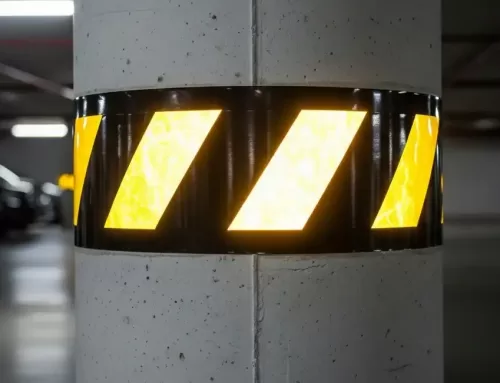What is long distance prismatic reflective film?

Long Distance Prismatic Reflective Film is the first generation of microprismatic reflective film, which was introduced in the early 1980s. Its English name is Long Distance Prismatic (LDP). The first generation of diamond-grade, crystal-grade, and star-grade products available on the market are all of this type. The front brightness of this type of reflective film is very high. The front brightness of the white film (0.2º/-4º) is generally above 800cd/lx/m, and the distribution of retroreflective light is not directional. Whether the reflective film is applied horizontally or vertically, the difference in reflective effect is not significant. However, at large incident angles and observation angles, the reflective brightness will be greatly attenuated. This type of reflective film that highlights the front retroreflective brightness is more suitable for contour marks, warning columns, etc., and is not suitable for traffic signs that require more visual brightness within the reading distance. This early prismatic reflective film was a phased result of the design and development at that time. The prism structure at that time could not solve the problem of retro-reflective brightness at large observation angles.
How to apply prismatic reflective sheeting ?

Prismatic coating is a technology that improves optical performance through the principles of refraction and reflection of light. Prismatic film corrects light through the refraction and reflection of light, improving brightness, uniformity and viewing angle. It is widely used in glasses, displays and other fields.
Specifically, the application scenarios of prism film include:
Glasses: Using prism films on glasses can reduce nystagmus and improve visual fatigue and other problems.
Display: Using prism film in displays can increase brightness, reduce light loss, and improve display effects.
The advantages of prism film include:
Light weight: Compared with traditional prisms, prism films are lighter and more suitable for long-term wear.
Thin thickness: The prism film is thinner and more suitable for products that require thin and light designs, such as glasses.
Brightness improvement: Using prism film in the display can significantly increase the brightness and improve the display effect.
Scope of application and precautions:
Scope of application: Prism film is suitable for glasses that need to improve vision and reduce nystagmus, as well as monitors and other products that need to increase brightness.
Note: When using prism film, you need to choose the appropriate degree and direction according to specific needs to ensure the best effect.
Microprism reflective film, composed of 5 basic films:
- Resin film protective layer – protects the reflective film, is waterproof, anti-scratch, etc., and has a smooth surface like a mirror.
- Color and pattern layer – the reflective film is colored, the printed film layer, and the beautiful and bright reflective film colors and patterns are made here. Including white, yellow, red, blue, green, brown black, etc.
- Prismatic layer-the core layer of reflective film
- Pressure-sensitive adhesive layer – the adhesive layer is coated with pressure-sensitive adhesive so that it can stick to the surface of objects, such as metal surfaces, for a long time and is durable.
- Release layer – that is, the peeling layer, which protects the pressure-sensitive adhesive layer of the reflective film before pasting. The fact that a thin prismatic reflective film contains so many film layers shows its stringent requirements for the production process, and also reflects the high level of current manufacturers.





